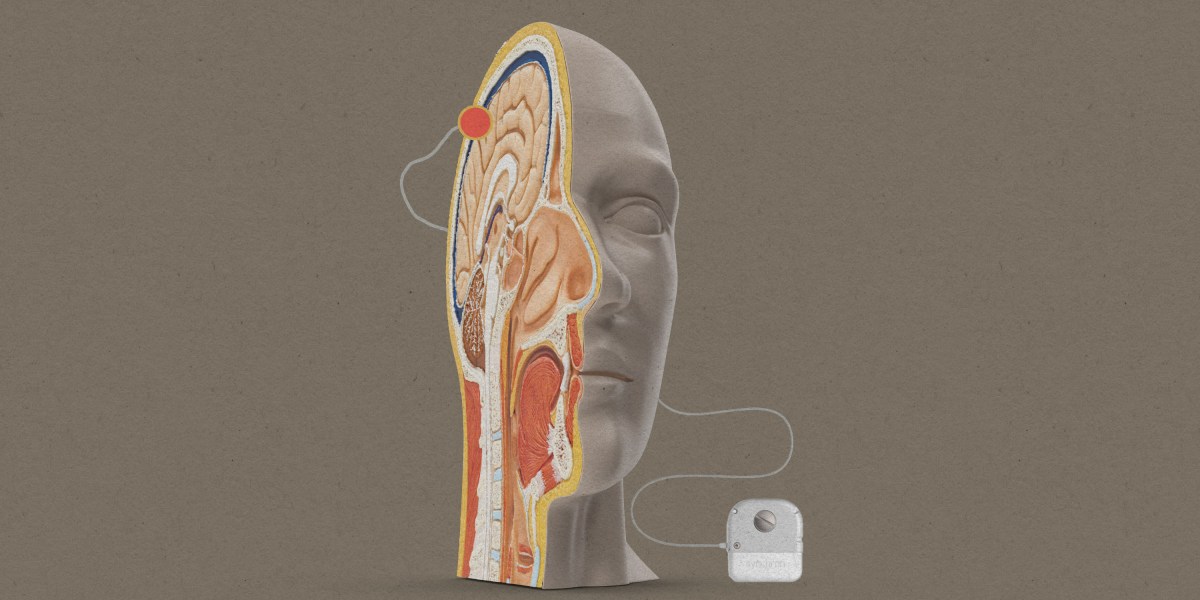Beyond Neuralink: Meet the other companies developing brain-computer interfaces

“Paradromics actually has the highest-bandwidth interface, but they haven’t demonstrated it in humans yet,” Robinson says. The electrodes sit on a chip about the size of a watch battery, but the device requires a separate wireless transmitter that is implanted in the chest and connected to the brain implant by a wire.
There’s a drawback to all these high-bandwidth devices, though. They all require open brain surgery, and “the brain doesn’t really like having needles put into it,” said Synchron founder Tom Oxley in a 2022 TED talk. Synchron has developed an electrode array mounted on a stent, the very same device doctors use to prop open clogged arteries. The “Stentrode” is delivered via an incision in the neck to a blood vessel just above the motor cortex. This unique delivery method avoids brain surgery. But having the device placed above the brain rather than in it limits the amount of data it can capture, Robinson says. He is skeptical the device will be able to capture enough data to move a mouse. But it is sufficient to generate mouse clicks. “They can click yes or no; they can click up and down,” he says.
Newcomer Precision Neuroscience, founded by a former Neuralink executive, has developed a flexible electrode array thinner than a human hair that resembles a piece of Scotch tape. It slides on top of the cortex through a small incision. The company launched its first human trials last year. In these initial studies, the array was implanted temporarily in people who were having brain surgery for other reasons.
Last week, Robinson and his colleagues reported in Science Advances the first human test of Motif Neurotech’s device, which only penetrates the skull. They temporarily placed the small, battery-free device, known as the Digitally Programmable Over-brain Therapeutic (DOT), above the motor cortex of an individual who was already scheduled to undergo brain surgery. When they switched the device on, they saw movement in the patient’s hand.
The ultimate goal of Motif’s device isn’t to produce movement. They’ve set their sights on a completely different application: alleviating mood disorders. “For every person with a spinal cord injury, there are 10 people suffering major depressive disorder and not responding to drugs,” Robinson says. “They’re just as desperate. It’s just not visible.”But the study shows that the device is powerful enough to stimulate the brain, a first step toward the company’s goals.
The device sits above the brain, so it won’t be able to capture high-bandwidth data. But because Motif isn’t actually trying to decode speech or help people move things with their mind, they don’t need it to. “Your emotions don’t change nearly as quickly as the sounds coming out of your mouth,” Robinson says.
Which of these companies will succeed remains to be seen, but with the momentum the field has already gained, controlling technology with your mind no longer seems like the stuff of science fiction. Still, these devices are primarily intended for people who have serious physical impairments. Don’t expect brain implants to achieve Neuralink’s goals of “redefining the boundaries of human capability” or “expanding how we experience the world” anytime soon.
Read more from Tech Review’s archive
Elon Musk claimed he wants to use brain implants to increase “bandwidth” between people. But the idea of extra-fast communication is “largely hogwash,” said Antonio Regalado in a previous issue of The Checkup. In some instances, however, bandwidth really does matter.





